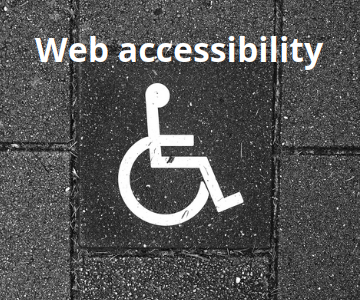Introduction

Web accessibility is the inclusive practice of ensuring that no obstacles exist that hinder persons with physical impairments, situational disabilities, and other bandwidth and speed limits from interacting with or accessing websites on the World Wide Web.
When websites are properly planned, created, and edited, all users have access to the same information and capabilities.
When a website is coded with semantically meaningful HTML, image textual equivalents, and meaningfully titled links, for example, it aids blind users who utilize text-to-speech software and/or text-to-Braille hardware.
It is easier for users with low vision to read and understand content when text and images are large and/or enlargeable.
When pages are not coded in a way that makes navigation difficult using only the keyboard or a single switch access device, this benefits users who cannot use a mouse or even a standard keyboard. Users that are deaf or have low hearing can understand videos that are closed captioned or have a sign language version available.
Issues covered by web accessibility
- Visual: This covers areas such as color blindness, low vision and blindness
- Motor/mobility: These issues include, for example, difficulty or inability to use one’s hands, as well as tremors and muscle slowness.
- Auditory: This covers issues such as deafness or suffer from hearing impairments
- Seizures: Photo epileptic seizures caused by stroboscopic or flashing effects on the retina.
Technologies to facilitate web accessibility

Here is a breakdown of some of the technologies which are utilized by many accessibility solutions to assist end-users:
Screen reader software: Software that fits into this category is capable of reading out content using synthesized speech, either selected elements of what is displayed on the monitor (helpful for users with reading or learning difficulties) or everything that is happening on the computer (used by blind and vision impaired users).
Braille terminals: These terminals consist of a constantly updated braille display that renders text as braille characters (typically by raising pegs through holes in a flat surface) and either a mainstream or a braille keyboard.
Screen magnification: This type of software helps to enlarges what is displayed on a computer monitor, making it easier to read for people who are visually impaired.
Speech recognition software: Programs like this can accept spoken commands or convert dictation into grammatically correct text – useful for those who have difficulty using a mouse or keyboard.
Conclusion
We hope you found this entry to be useful if so be sure to share it on social media and follow us on our own social profiles for more content.
Also be sure to check out our business solutions, free software & online tools along with our blog which contains more technical content.
AGR Technology is an Australian based business providing technical solutions to other businesses along with digital software, content and tools to end-users to help them maximize the potential of their technology.
Related links from our tech glossary:
LMS (Learning Management System)
Reference(s):
Wikimedia Foundation. (2021, April 22). Web accessibility. Wikipedia. https://en.wikipedia.org/wiki/Web_accessibility.
(All other images used with permission under public licenses or created by AGR Technology)
![logo-new-23[1] logo-new-23[1]](https://agrtech.com.au/wp-content/uploads/elementor/thumbs/logo-new-231-qad2sqbr9f0wlvza81xod18hkirbk9apc0elfhpco4.png)